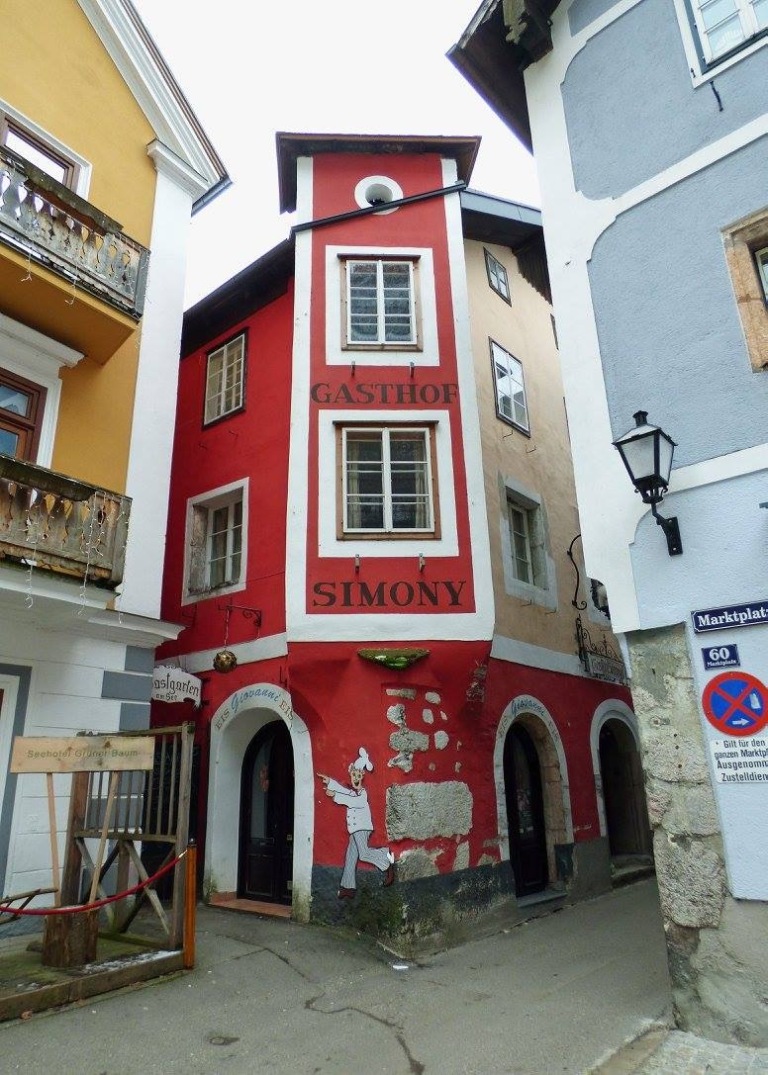This week’s journey takes us back to the beautiful Austrian village of Hallstatt. Nestled along the shores of an eponymous lake at the foot of towering Alpine peaks, Hallstatt – once home to the oldest human settlement in Europe – is today a postcard-perfect hamlet of gingerbread houses, cobbled streets, and spectacular natural scenery.
Archaeological evidence suggests human activity in the Salzkammergut region of present-day Austria began as early as 5000 BC. The exploitation of natural salt deposits in the area began in the 2nd millennium BC, with underground mining operations beginning in the late Bronze Age. Archaeological finds at Hallstatt – a name meaning “salt settlement” – suggest “a flourishing, stratified and highly organized Iron Age society with wide trade links across Europe” (UNESCO) had developed on the shores of the lake by the 8th century BC. A significant collection of artifacts from this period, including shoes, tools, weapons and articles of clothing, were preserved both in the salt itself, and in a meticulously excavated prehistoric cemetery nearby. Extraction of Hallstatt’s famed “white gold” continued through Roman occupation of the region, and remains one of the town’s most profitable industries, in addition to tourism.
The present village of Hallstatt was re-built in the late 18th century after a fire ravaged the town in 1750. While home to only 800 permanent residents, Hallstatt receives over one million visitors each year, drawn to its idyllic location and unmistakable charm. The village is particularly saturated with tourists in the summer months, although we found it relatively unoccupied during our visit on a snowy day in early December 2017. Our time here was disappointingly brief – a few short hours during a drive to Vienna from Salzburg – but enjoyed in the best of company: with Tito’s mom and a beloved family friend.
Hallstatt can only be explored on foot, so we parked our rental car outside the town and made our way along perilously icy footpaths into this fairytale of a village…
























{that’s a cat ramp!}











The Catholic Church of Hallstatt (pictured above) – specifically, the ‘Bone House’ directly adjacent to the church graveyard – is one of the town’s most unusual and popular sights. The ossuary, located in St. Michael’s Chapel, holds a collection of more than 600 artistically painted skulls of former Hallstatt residents. Limited burial space in the area of the village resulted in the need to reuse existing grave sites for new burials; when an existing grave was excavated, the skull or bones of the original occupant were transferred to the ossuary at St. Michael’s. The identity of the deceased individual was preserved in decorative paintings and inscriptions upon the skull, with various artistic styles represented over time. Skulls with wreath ornamentation, for example, are the oldest in the ossuary – the darker the wreath, the older the skull. Flower ornamentation and a black cross on the forehead mark the next phase of artistic development, followed by green leaves on the temple. Beginning in the 19th century, thin ivy branches and Latin inscriptions began to replace prior ornamentation. Very few skulls appeared in the Bone House in the last years of the 20th century, although Hallstatt residents may still request their remains be interred here.








Thank you for joining us on this adventure in snowy Hallstatt! -Tito, Brooke & Griffey June
Next week’s journey: Favorite Christmas Markets of Europe
